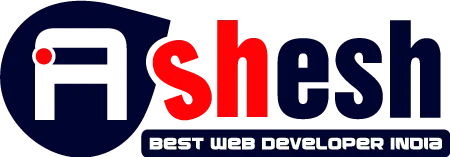
Introduction to Web Development and Web Programming
Web development and web programming are two closely related fields within the tech industry, each playing a crucial role in the creation and maintenance of websites. While they often intersect, understanding their distinct functions can provide clarity for individuals pursuing a career in this dynamic sector.
At its core, web development encompasses a broad range of activities aimed at building a website. These activities extend beyond just writing code; they include web design, content creation, and client/server-side scripting. Web developers are responsible for ensuring that a website is not only aesthetically pleasing but also functional and user-friendly. They work on the overall structure and layout, often collaborating with designers, writers, and other stakeholders to meet the project’s goals.
In contrast, web programming, sometimes referred to as web coding, is a specialized subset of web development focused primarily on writing the code that brings a website to life. Web programmers use various programming languages, such as HTML, CSS, JavaScript, PHP, and Python, to create interactive and functional elements on a website. Their role is critical in developing dynamic content, user interfaces, and complex features that enhance user engagement and experience.
Understanding the differences and similarities between web development and web programming is essential for anyone looking to enter the tech industry. Knowing these distinctions helps aspiring professionals identify their interests and strengths, guiding them towards the appropriate educational and career paths. Whether one’s inclination leans more towards the creative aspects of web design or the technical challenges of web programming, a clear grasp of both fields is invaluable in today’s digital landscape.
The convergence of web development and programming makes it possible to create robust, fully-fledged websites that cater to various user needs and business goals. As technology continues to evolve, the demand for skilled web developers and programmers is expected to grow, making it a promising field with numerous opportunities for innovation and advancement.
Historical Context
The internet’s evolution from a limited network to a global phenomenon is marked by significant milestones that define both web development and web programming. The early days of the web were characterized by pioneering efforts from researchers and computer scientists to create an interconnected digital environment. The concept took shape with ARPANET in the late 1960s and gained momentum in the 1980s with the advent of the World Wide Web, thanks to the groundbreaking work of Tim Berners-Lee.
Web development in its infancy consisted of simple static websites created using basic HTML. This language allowed developers to structure content, using links to connect pages. Early websites were text-heavy and lacked interactive features. However, as the potential of the web became evident, there was a burgeoning need for more dynamic and engaging web applications, driving advancements in web programming.
Key technological advancements in the 1990s, such as the introduction of CSS for styling web pages and JavaScript for client-side scripting, significantly transformed web development. These technologies allowed developers to craft visually appealing and interactive user experiences. The rise of web browsers like Netscape Navigator and Internet Explorer catalyzed these developments further.
The early 2000s witnessed the proliferation of server-side programming languages such as PHP, Python, and Ruby. These languages enabled the creation of robust web applications by allowing developers to write scripts that would run on web servers, generating dynamic content for users. The era also saw the emergence of content management systems (CMS) like WordPress, democratizing web development by making it accessible to non-programmers.
With the advent of frameworks like AngularJS, React, and Django, web programming took another leap forward in the 2010s, emphasizing modular and scalable code architecture. These frameworks facilitated the separation of front-end and back-end development, delineating the roles of web developers and web programmers more clearly. Thus, the field of web development has grown from designing static pages to engineering complex, interactive, and user-centric web applications.
Overall, the continuous advancements in programming languages, tools, and frameworks have not only defined but also expanded the roles within web development. Today, web developers and programmers collaborate extensively to build the sophisticated web applications that are integral to modern digital experiences.
“`html
Key Skills in Web Development
Web development encompasses a broad range of crucial skills that collectively enable the creation of both functional and aesthetically pleasing websites. One of the foundational trio in web development is a thorough understanding of HTML, CSS, and JavaScript. HTML, or HyperText Markup Language, forms the backbone of a website; it structures the content and facilitates the incorporation of multimedia elements such as images and videos. CSS, or Cascading Style Sheets, is instrumental in styling websites, enabling developers to define the visual presentation, including the layout, colors, and fonts.
JavaScript enhances interactivity, bringing websites to life by enabling dynamic content and advanced user interactions. Beyond these core languages, proficiency in frameworks and libraries like React, Angular, and Vue.js can significantly streamline the development process, improve code efficiency, and enhance the user experience. Additionally, familiarity with server-side languages and frameworks, such as Node.js, is also advantageous for full-stack web development. These tools collectively contribute to the creation of seamless, responsive, and interactive websites.
Equally important in the realm of web development is knowledge of Content Management Systems (CMS) such as WordPress, Joomla, and Drupal. These platforms simplify the management of website content, allowing non-developers to update and maintain website content with ease. Mastery of CMS platforms can dramatically increase productivity and expand the scope of what developers can achieve.
Keeping up with modern design trends and usability principles is equally critical. A well-designed website is not just about aesthetics but also about ensuring a user-friendly experience. This encompasses understanding and applying principles such as visual hierarchy, accessibility, and responsive design to ensure that websites are not only visually appealing but also easy to navigate and use across different devices.
Thus, the amalgamation of these skills—ranging from technical knowledge of coding languages and frameworks to an acute awareness of design trends—constitutes the essence of effective web development. Staying updated with the latest trends and continuously honing these skills ensure that a web developer can create websites that meet contemporary standards of functionality, usability, and aesthetics.
“““html
Key Skills in Web Programming
Web programming encompasses a wide range of skills critical for crafting dynamic and interactive websites. Central to this field is a strong proficiency in several programming languages that serve as the backbone of web applications. For instance, JavaScript is indispensable for client-side scripting, enabling interactive web pages. Similarly, Python is favored for its versatility and readability, making it a top choice for web development frameworks like Django and Flask.
Other essential programming languages in web programming include Ruby, known for its elegant syntax and productivity, often utilized in Ruby on Rails; PHP, which powers around 78% of all websites via platforms like WordPress; and Java, a robust language frequently employed for large-scale enterprise web applications. Mastery in these languages is crucial as they form the core tools for web programmers.
In addition to language proficiency, web programmers must have a comprehensive understanding of databases and server management. Knowledge of relational databases like MySQL and PostgreSQL, as well as non-relational databases such as MongoDB, is vital for organizing and retrieving data efficiently. Equally important is the ability to manage servers, ensuring that web applications are secure, scalable, and reliable. This often involves using server technologies and understanding hosting environments.
Another critical area is API integration. Web programmers routinely interact with various APIs to extend the functionality of web applications, whether it’s integrating payment gateways, social media platforms, or third-party services. Proficiency in RESTful and GraphQL APIs, therefore, significantly boosts a web programmer’s capability to develop feature-rich applications.
Moreover, successful web programming hinges on problem-solving abilities. Programmers must be adept at identifying issues, debugging code, and optimizing performance. This requires a thorough understanding of algorithms and data structures, which underpins efficient coding practices and effective solutions to complex programming challenges. Conclusively, these skills collectively form the foundation upon which successful web programming is built, driving innovation and functionality in web applications.
“`
Tools and Technologies
The tools and technologies utilized in web development and web programming play a critical role in shaping the efficiency and effectiveness of creating web applications. While both domains often overlap, certain tools and technologies are specifically tailored to meet the unique requirements of each domain.
Integrated Development Environments (IDEs) are essential in both web development and web programming. IDEs, such as Visual Studio Code, Sublime Text, and JetBrains’ WebStorm, offer code completion, debugging, and syntax highlighting, which streamline the development process. These environments support multiple languages, providing flexibility for developers and programmers alike.
Version control systems are indispensable for managing code changes and collaboration within teams. Git, coupled with platforms like GitHub and GitLab, is the predominant choice across both web development and web programming. It ensures that multiple contributors can work seamlessly while maintaining a robust history of code modifications.
Software Development Kits (SDKs) also play a significant role, especially when building complex applications. For instance, Android SDK and iOS SDK are tailored for mobile web development, whereas SDKs for various programming languages (e.g., Java SDK, .NET SDK) cater to more general web programming needs.
Popular frameworks and libraries enhance efficiency by providing pre-written code and templates, allowing for faster and more structured development. In web development, front-end frameworks such as React and Angular are highly favored. React, developed by Facebook, is known for its component-based architecture that promotes reusability and ease of maintenance. Angular, backed by Google, is renowned for its two-way data binding and dependency injection, contributing to a more dynamic user experience.
On the back-end, web programming often leverages frameworks like Django and Laravel. Django, a high-level Python framework, emphasizes rapid development and pragmatic design, making it a go-to choice for scalable web applications. Laravel, a PHP framework, is celebrated for its elegant syntax and comprehensive ecosystem, simplifying tasks such as routing, authentication, and caching.
These tools and technologies, ranging from IDEs and version control systems to frameworks and SDKs, collectively facilitate the development and programming process, enabling professionals to create robust, scalable, and efficient web applications.
Career Paths and Opportunities
The career landscape for web developers and web programmers is diverse, offering numerous opportunities across various roles such as front-end developer, back-end developer, full-stack developer, and software engineer. Each of these career paths carries distinct responsibilities and presents unique day-to-day tasks.
A front-end developer focuses on the visual aspects of a website or application. They leverage technologies like HTML, CSS, and JavaScript to ensure an engaging and responsive user experience. Their primary responsibilities include designing user interfaces, optimizing web performance, and enhancing user accessibility.
In contrast, a back-end developer handles the server-side aspects of web applications. Working with languages such as Python, Ruby, or Java, and frameworks like Django and Node.js, back-end developers are responsible for database management, server configuration, and ensuring seamless data exchange and functionality between the front-end and back-end components.
For those seeking a comprehensive role, the full-stack developer position integrates both front-end and back-end responsibilities. Mastery of a wide array of technologies enables full-stack developers to oversee the entire development process, ensuring coherence between the user interface and server operations.
Furthermore, the role of a software engineer transcends web development to encompass a broader spectrum of software solutions. Software engineers engage in the conceptualization, design, development, and deployment of software systems. Their day-to-day tasks range from writing code and debugging to collaborating with cross-functional teams and integrating various systems and APIs.
The job market for these roles remains robust. Innovations in technology perpetually drive demand, ensuring a consistent need for skilled professionals. Trends indicate a heightened demand for full-stack developers due to their versatile skill set, while specialized roles in front-end and back-end development also continue to be highly sought after.
Career growth in these fields can be substantial. With experience, developers and programmers can advance to senior or lead roles, project management, or even transition into specialized areas such as cybersecurity or data science. Continuous learning and adaptation to emerging technologies are key to sustaining a dynamic and rewarding career in web development and programming.
Common Myths and Misconceptions
There are several prevalent myths and misconceptions surrounding web development and web programming, many of which can cloud one’s understanding of these crucial fields. It’s essential to clarify these misunderstandings to provide a more accurate picture of what web development and programming truly entail.
One common myth is that web development solely focuses on aesthetics and design. While it’s true that visual appeal is a significant aspect of web development, the field encompasses much more than just creating attractive websites. Web development involves a comprehensive array of tasks, such as crafting user interfaces, ensuring site functionality, optimizing performance, and enhancing user experience. Developers often work extensively on front-end technologies like HTML, CSS, and JavaScript to create responsive and interactive designs that provide seamless user interactions. Thus, reducing web development to mere aesthetics fails to capture the complexity and breadth of the profession.
Another frequent misconception is that web programming deals only with backend work. Web programming indeed includes backend development, dealing with server-side logic, database management, and integrations. However, it also incorporates frontend development. Programmers often use languages such as Python, PHP, or Ruby for server-side scripting, but they might also engage with JavaScript frameworks like React or Angular to work on frontend functionalities. Both client-side and server-side tasks integral to web programming demonstrate that it isn’t restricted to backend activities alone.
Additionally, there’s a belief that web developers and web programmers are interchangeable. Although there is overlap between these roles, they have distinct focuses. Web developers generally work on implementing design into functional websites, ensuring a smooth user experience, while web programmers tend to be more involved in writing the underlying code that powers the site or web application.
Clearing these misconceptions highlights the multifaceted nature of both web development and web programming. Recognizing the diverse skill sets and responsibilities involved in each can lead to a more appreciable understanding of these vital domains in the digital era.
Conclusion: Choosing Your Path
In summary, web development and web programming are closely related yet distinct fields within the tech industry. While web development encompasses the broader process of creating and maintaining websites, including design, user experience, and front-end functionality, web programming focuses on the technical aspects of writing code to implement those designs and functionalities.
Key differences lie in their primary areas of focus. Web developers often engage in visual design, user interface structuring, and ensuring website responsiveness. They might use tools like HTML, CSS, and JavaScript frameworks to bring a website to life. On the other hand, web programmers delve deeper into software development principles, coding logic, and problem-solving using languages like JavaScript, Python, PHP, or Ruby to create complex web applications and backend functionalities.
When choosing a career path, consider your personal interests, skills, and long-term career goals. If you have a strong inclination towards creativity, design, and aesthetics, web development may be more suitable. Conversely, if you enjoy technical challenges, coding logic, and algorithmic problem-solving, web programming could be the right fit. Additionally, both fields offer lucrative career opportunities and the chance to work on diverse projects, ranging from simple websites to sophisticated web applications.
It’s important to note the interrelated nature of these fields. Knowledge in one can significantly enhance expertise in the other. A web developer with programming skills can build more dynamic and efficient websites, while a web programmer familiar with development principles can create more user-friendly applications. Thus, exploring both areas can provide a comprehensive understanding of web creation and open up various professional avenues.
Ultimately, finding your passion and niche within the tech industry involves continuous learning and exploring different facets of web technology. Whether you choose web development, web programming, or a blend of both, the dynamic and evolving nature of the industry offers endless possibilities for growth and innovation.



